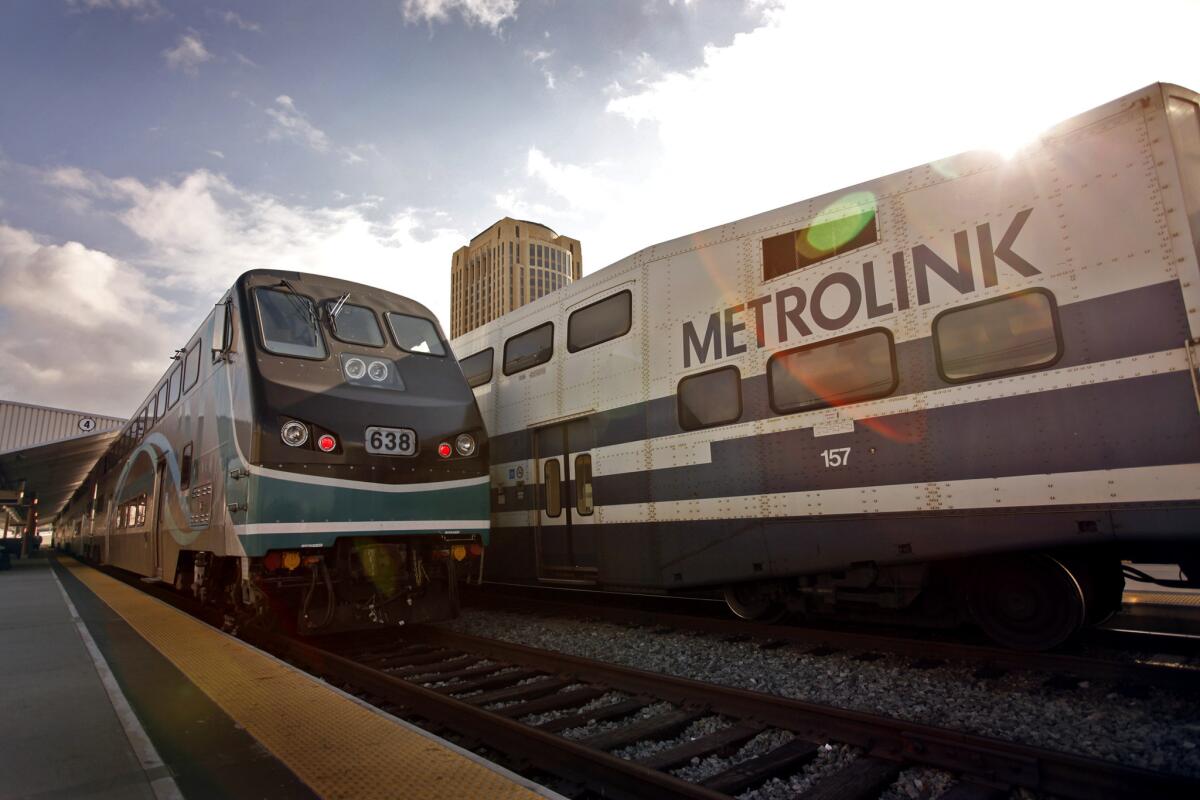Study finds declining air pollution from Metrolink maintenance yard

- Share via
Potentially harmful diesel emissions from Metrolink’s maintenance facility near downtown Los Angeles are in decline and lower than other air pollution sources in the area, according to a study released Friday.
The health risk assessment, which was requested last year by Rep. Adam Schiff (D-Burbank), states that diesel emissions are expected to plunge 79% from 2010 to 2017 due to ongoing measures by the commuter railroad to reduce air pollution at the facility.
“Completing the assessment was critical to quantify the emissions from the facility while demonstrating the positive impact of the improvements” the railroad is making, said Michael DePallo, Metrolink’s chief executive.
Known as Taylor Yard, the central maintenance facility is next to the Los Angeles River north of the 110 Freeway and surrounded by the Elysian Valley and Cypress Park neighborhoods. Eight schools with almost 3,900 students are in the area.
Schiff sought the study on behalf of residents and community groups that have long been concerned about diesel exhaust from Metrolink’s locomotives when they are being serviced and repaired.
Diesel emissions have been linked to cancer, asthma and other respiratory illnesses, especially in neighborhoods near major transportation corridors heavily used by trucks and trains.
Researchers concluded that the cancer risk associated with diesel emissions from the maintenance yard will decrease 83% from 243 chances in a million in 2010 to 40 chances in a million in 2017.
The average cancer risk for diesel emissions across the Los Angeles Basin is about 300 chances in a million, according to the South Coast Air Quality Management District.
The report also found that the pollution from diesel emissions along Interstate 5 and other roads in the area was double the amount from the maintenance facility. In addition, I-5 was identified as the dominate contributor to the cancer risk in the area.
Schiff said the health risk assessment provides valuable information about the reduction in air pollution from the maintenance yard, though more needs to be done.
“The community still has many questions about the effects of rail operations on a variety of other health outcomes ranging from asthma to pulmonary disease,” Schiff said. “As we grow our public transportation networks we must do so responsibly.”
Follow @LADeadline16 for transportation news
More to Read
Sign up for Essential California
The most important California stories and recommendations in your inbox every morning.
You may occasionally receive promotional content from the Los Angeles Times.














